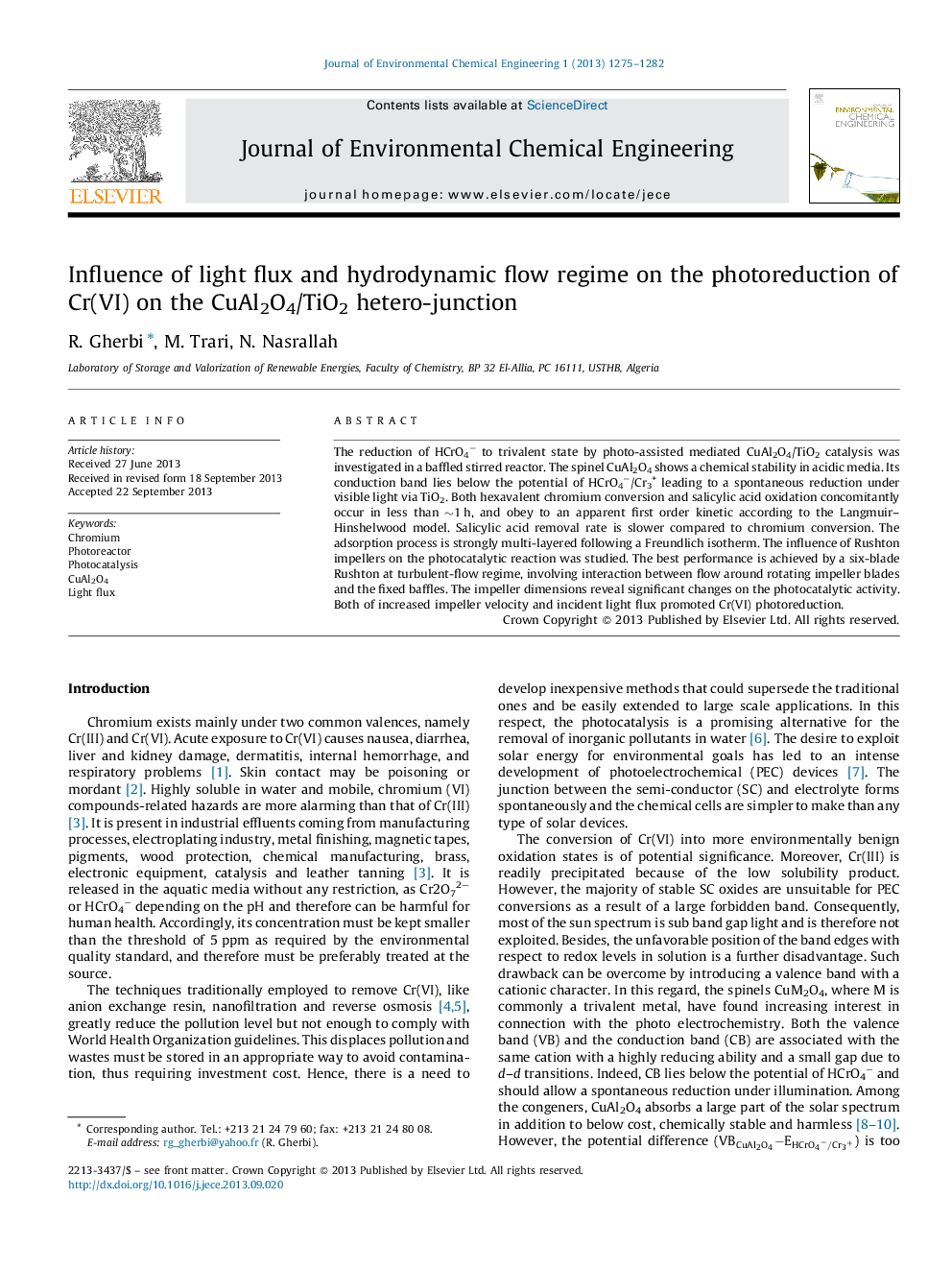| Article ID | Journal | Published Year | Pages | File Type |
|---|---|---|---|---|
| 222531 | Journal of Environmental Chemical Engineering | 2013 | 8 Pages |
The reduction of HCrO4− to trivalent state by photo-assisted mediated CuAl2O4/TiO2 catalysis was investigated in a baffled stirred reactor. The spinel CuAl2O4 shows a chemical stability in acidic media. Its conduction band lies below the potential of HCrO4−/Cr3+ leading to a spontaneous reduction under visible light via TiO2. Both hexavalent chromium conversion and salicylic acid oxidation concomitantly occur in less than ∼1 h, and obey to an apparent first order kinetic according to the Langmuir–Hinshelwood model. Salicylic acid removal rate is slower compared to chromium conversion. The adsorption process is strongly multi-layered following a Freundlich isotherm. The influence of Rushton impellers on the photocatalytic reaction was studied. The best performance is achieved by a six-blade Rushton at turbulent-flow regime, involving interaction between flow around rotating impeller blades and the fixed baffles. The impeller dimensions reveal significant changes on the photocatalytic activity. Both of increased impeller velocity and incident light flux promoted Cr(VI) photoreduction.
